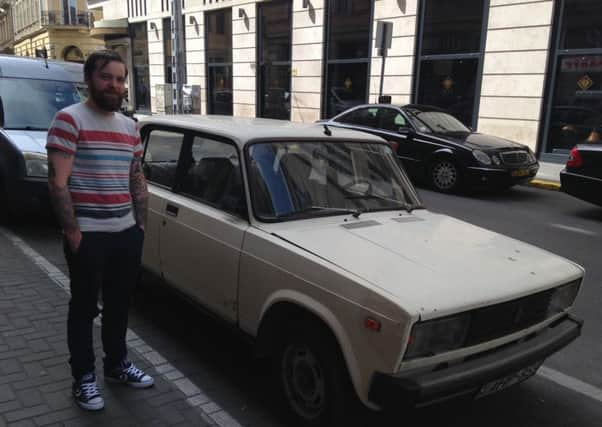Talking Motors: Just love spotting the best of the worst...


A miracle.
How do you double the value of a Lada? Fill the petrol tank.
A man goes into a garage and asks: “Do you have a windscreen wiper for my Lada?”
The attendant says: “That sounds like a fair swap.”
Advertisement
Hide AdAdvertisement
Hide AdI’m not ashamed to admit I have a soft spot for rubbish cars, and a recent trip to Budapest ticked a very satisfying box in my ‘Car Spotter’s book for Saddos’ as I passed Lada after Lada parked-up on the streets.
As the well-worn jokes suggest, Ladas fall very much into the rubbish car category which have me flapping and swiping at my phone to take pictures.
And I even saw a Trabant, an even higher points scorer on Eastern Bloc Top Trumps, but it was on the opposite side of the road and I couldn’t get a picture.
This isn’t to say I was unmoved by the beauty of the Hungarian capital, St Stephen’s Basilica, the Castle District, the spas, the Danube.
Advertisement
Hide AdAdvertisement
Hide AdIt’s just that they didn’t make me shout and point in quite the same way.
I want a Lada in the same way I want an Austin Montego or a Metro or a Fiesta Mark II.
Lada’s Riva was based on the 1966 Fiat 124, and was finally ready in April 1970, after the Soviet Union had struck a deal with Fiat to use the 124 as a base for a model to be produced in their new Togliatti factory.
The factory would be capable of producing 2,000 cars per day. They needed Fiat’s help because they didn’t know much about making cars, despite their experience in building things like tanks, wagons and tractors.
Advertisement
Hide AdAdvertisement
Hide AdLike the space race, the Soviets looked across to the US when it came to their car making aspirations to see what they were doing.
In the mid-60s the US had a car for every 2.7 people and their car production was around 8m cars per year.
On the Eastern side of the pond in the Soviet Union there was less than one car for every 238 people, and production was well below 250,000.
But despite ramping-up car production in the Soviet Union and becoming one of the highest selling cars without a major design change with 20 million units, the Lada jokes had to come from somewhere. Their cheap car status shone through, and a UK ad in the 80s stating ‘nothing spared except the expense’ was incorrect.
Advertisement
Hide AdAdvertisement
Hide AdBack in the Soviet Union, parts were so much at a premium they were flung over the factory walls by workers to sell on the black market, and Pirelli tyres brought in for export models were secretly shipped out using the sewer system, so people could replace inferior tyres on their own models.
Even on late models, gaps between panels and orange peel effect on the paint can be found without much scrutiny… and that’s ignoring deliberate archaisms such as pressed steel wheels. And bear in mind production of the Riva only ended in 2012.
But that’s all part of the appeal. Retro kitsch taken to the extremes – and nothing said this more than when I saw a Lada pull in to park in one of Budapest’s side streets last week. One of its mirrors was hanging off and it only had one working brake light. What’s not to love?
Perhaps the fact Lada’s new models look like what they are, new cars, and the fact Lada sport claimed a points finish in a World Touring Cars race in Hungary only the other week take away some of the shine.
Advertisement
Hide AdAdvertisement
Hide AdIt seems that in the modern age of cars being indistinguishable from one another, that also goes for totally appalling cars stealing our affections.
“There’s a competition at my local pub.
“First prize is a Lada … Second prize is two Ladas.”